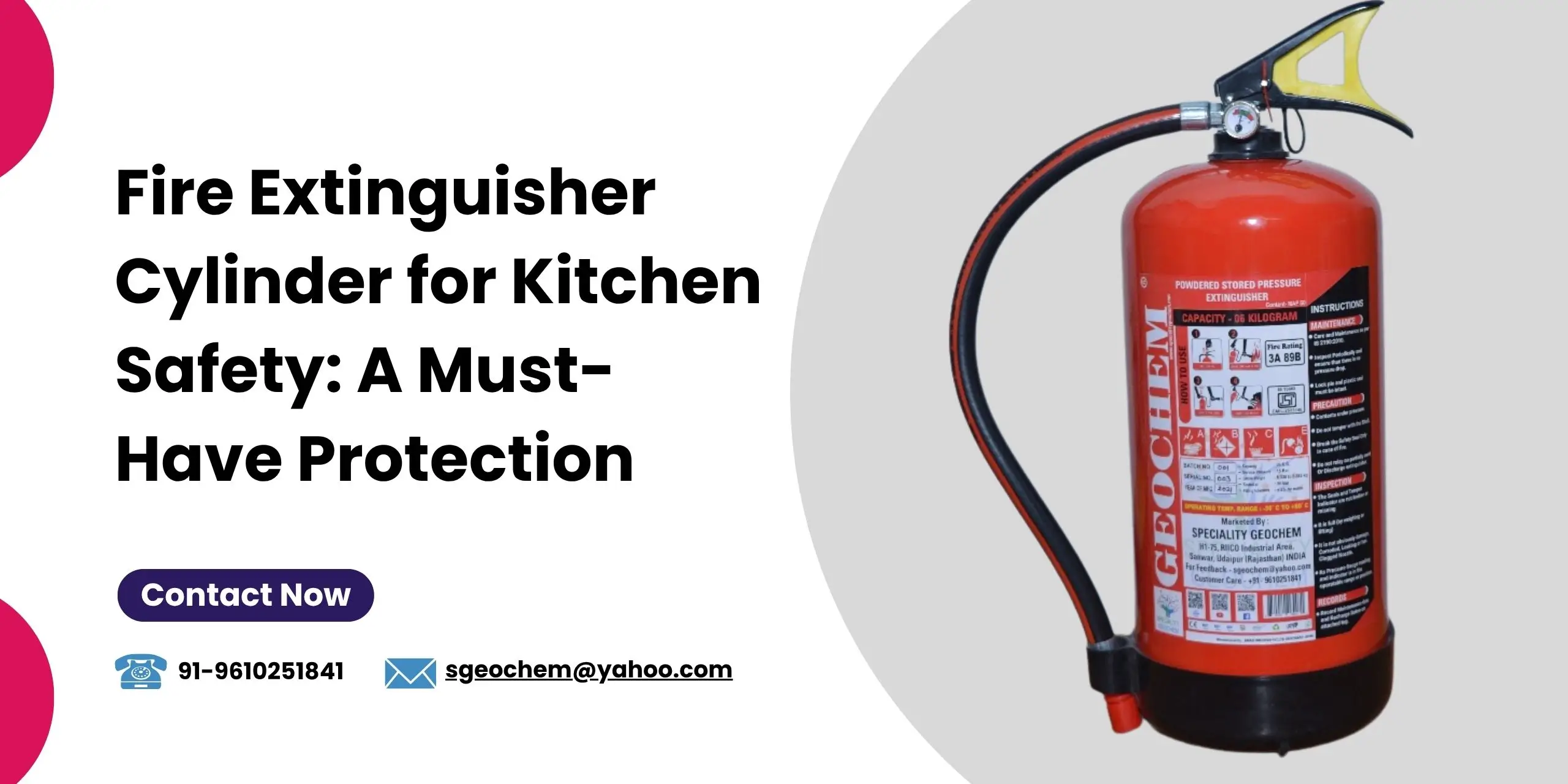When it comes to fire safety, few places are as high-risk as gas stations and fuel storage facilities. Surrounded by flammable liquids, vapors, and machinery, even the smallest spark can lead to a devastating fire. This is where a Fire Extinguisher Cylinder for Gas Stations becomes a crucial safety investment — providing instant fire suppression and preventing small incidents from escalating into large-scale disasters.
Understanding Fire Risks at Gas Stations
Gas stations store and dispense thousands of liters of petrol and diesel every day. Vapors from these fuels are highly combustible and can ignite easily due to static discharge, cigarette embers, hot engines, or faulty electrical wiring. Fuel storage areas, too, face risks from leaks, mechanical failure, and human error.
The volatile environment makes fire preparedness essential. Installing a Fire Extinguisher Cylinder for Gas Stations is one of the most effective steps in ensuring safety, regulatory compliance, and peace of mind.
Why Gas Stations Need Fire Extinguisher Cylinders
Unlike small fire extinguishers used in homes or offices, gas station safety systems require industrial-grade extinguishers designed to control Class B (flammable liquid) and Class C (electrical) fires. These cylinders are built to handle high-intensity flames that spread rapidly in open environments.
Key Reasons for Installation:
- Instant Response: Automatic fire extinguisher cylinders can activate within seconds, suppressing flames before they reach fuel sources.
- Safety Compliance: Petroleum and explosive safety regulations in India mandate that every gas station must have an adequate number of certified extinguishers on-site.
- Asset Protection: Fire accidents not only risk human lives but also damage fuel pumps, vehicles, and property worth lakhs.
- Reduced Downtime: Quick suppression minimizes business interruption and financial losses.
In short, a Fire Extinguisher Cylinder for Gas Stations is not just equipment—it’s an investment in protection, compliance, and business continuity.
Types of Fire Extinguisher Cylinders Used in Gas Stations
Every fire scenario demands a specific type of extinguisher. Gas stations typically rely on a combination of the following:
1. Dry Chemical Powder (DCP) Cylinders
These are the most common extinguishers used at petrol pumps. The powder effectively cuts off oxygen supply and interrupts the chemical reaction of fire. DCP cylinders are ideal for both flammable liquid (Class B) and electrical fires (Class C).
2. Carbon Dioxide (CO₂) Cylinders
CO₂ extinguishers work by displacing oxygen and cooling down the fire source. They leave no residue, making them suitable for control panels and electrical sections of fuel stations.
3. Foam-Based Cylinders (AFFF)
Aqueous Film Forming Foam extinguishers create a blanket that seals the fuel surface from oxygen, preventing re-ignition. These are used around fuel storage tanks and filling stations.
4. Automatic Fire Suppression Cylinders
In critical areas like underground storage rooms or pump cabins, automatic systems are installed. They use heat-sensitive tubes or detection lines that release the extinguishing agent immediately when fire is detected.
Each of these systems contributes to a multi-layered defense strategy, ensuring maximum protection against diverse fire hazards.
Placement and Installation Guidelines
Even the best extinguisher is ineffective if not positioned correctly. Gas stations must follow certain guidelines when installing Fire Extinguisher Cylinders for Gas Stations:
- Accessibility: Cylinders should be placed within 15 meters of any fuel dispensing unit.
- Height: Mount extinguishers at an accessible height—usually 1 meter above ground level.
- Visibility: Clearly marked with signage for quick identification during emergencies.
- Environment: Protect from direct sunlight or rain to avoid corrosion or pressure loss.
- Periodic Testing: Regular maintenance checks are vital to ensure functionality and pressure stability.
Proper training for staff on operating and inspecting these systems is equally important.
Maintenance and Inspection of Fire Extinguisher Cylinders
Maintenance ensures that extinguishers are always ready when needed. Fuel stations should have a monthly inspection schedule and a professional servicing every six months.
Checklist Includes:
- Checking pressure gauge and hose condition.
- Ensuring nozzle, pin, and seal integrity.
- Verifying that extinguishers are not blocked or tampered with.
- Conducting hydrostatic tests periodically as per safety standards.
Neglecting maintenance can lead to failure during emergencies, making it crucial to keep every Fire Extinguisher Cylinder for Gas Stations in prime working condition.
Fire Safety Protocols for Fuel Storage Areas
Fuel storage areas are high-risk zones requiring advanced protection measures. Fire suppression systems must be designed to handle large volumes of combustible material. Along with extinguisher cylinders, the following should be implemented:
- Automatic Fire Detection Systems: Sensors and alarms for early warning.
- Emergency Shut-off Valves: To instantly stop fuel flow in case of fire.
- Adequate Ventilation: To disperse fuel vapors and prevent accumulation.
- Training and Drills: Regular mock drills to train staff for quick response.
- Isolation Barriers: Firewalls or sand bunds to prevent spreading to adjacent areas.
When paired with Fire Extinguisher Cylinders for Gas Stations, these systems create a comprehensive fire protection network that significantly reduces the impact of potential disasters.
Regulatory Requirements in India
The Petroleum and Explosives Safety Organization (PESO) and local fire departments enforce strict regulations for fire safety at fuel retail outlets. Some key guidelines include:
- Every dispensing unit must have at least two DCP extinguishers of 9 kg capacity.
- CO₂ extinguishers must be installed near electrical panels.
- Foam extinguishers are mandatory near fuel storage tanks.
- Regular mock fire drills and staff training must be documented.
- Fire extinguishers should be BIS or ISI certified and refilled after every use.
Compliance not only ensures safety but also avoids legal penalties, operational shutdowns, and insurance complications.
Modern Innovations in Fire Suppression Technology
The fire safety industry has evolved with modern solutions such as:
- Automatic Fire Suppression Tubes: These detect and suppress fires autonomously without human intervention.
- Environment-Friendly Agents: Non-toxic and residue-free clean agents are replacing traditional powders in sensitive areas.
- Smart Monitoring Systems: IoT-enabled extinguishers can send alerts about low pressure, tampering, or leaks.
Such innovations make the Fire Extinguisher Cylinder for Gas Stations more efficient, reliable, and sustainable.
Conclusion
At Speciality Geochem, we understand that safety at gas stations and fuel storage facilities demands more than just compliance—it requires commitment. Our advanced Fire Extinguisher Cylinders for Gas Stations are engineered to deliver rapid, reliable protection in high-risk environments, ensuring that every second counts when it matters most.
From precision manufacturing to rigorous quality testing, each product reflects our dedication to excellence and safety. We empower businesses to operate confidently, knowing they are equipped with dependable fire suppression solutions built to safeguard lives, property, and fuel assets.
When it comes to petroleum fire safety, Speciality Geochem stands as your trusted partner—where prevention meets innovation, and protection becomes a promise.

